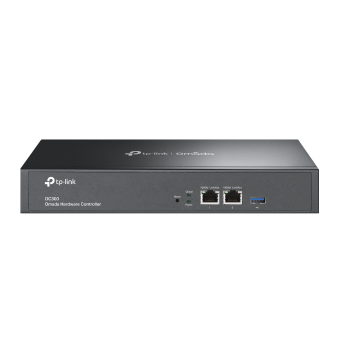How to configure Account on Omada Controller
Contents
Objective
This article introduces how to configure users and roles on the Omada Controller.
Requirements
- Omada Software Controller (v5.8 and above) / Cloud-Based Controller / Hardware Controller
Introduction
By configuring users and roles on the Omada Controller, you can assign specific access and operational rights to different accounts, thereby improving the security of the Controller system.
There are three roles: Main Administrator, Administrator, and Viewer.
- Main Administrator
The Main Administrator can access all features in the corresponding View. The Account that first creates the Controller will be the Main Administrator.
- Administrator
Administrators can access most features in the corresponding View, but some modules are restricted. For instance, they do not have permission to perform Controller migrations or automatic data backups, and they have view-only access to license management and custom account roles.
- Viewer
Viewers can view the status and settings of certain features in the corresponding View.
You can view the detailed permissions of each role in Global View> Account > Role. There are four permission levels: Modify, View Only, Access, and Block.
- Modify: Users can access all data and use all features of the specified modules.
Note: Some functions, such as MSP Mode, automatic activation, and renewal of licenses, can only be accessed and used by the Main Administrator
- View Only: Users have view-only access to the specified modules and cannot use any features.
- Access: Users can access and use some features of the specified modules.
- Block: Users are blocked from accessing the specified pages and features.


Note: To help users successfully log in to the Site, the Site list can be viewed even if the Global Dashboard page permission is set to Block.
If the default role cannot meet your demands, you can create a role and customize its permissions.
Configuration
Step 1. Log in to the Omada Controller, go to Global View> Account > Role, and click Add New Role. Then, enter the role name and set permissions for the different views.


Step 2. Go to Global View> Account > Account, and click Add New User. Enter the username and password and select the role you have created. In Site Privileges, configure the user's site permissions to limit the scope of sites that the user can access. All Site is selected by default, and you can manually select sites according to your needs. Enter the Email and Alert Email to receive the generated operation logs and alert logs.


Conclusion
Now, you have created your own Account with custom roles to limit user permissions.
Get to know more details of each function and configuration please go to Download Center to download the manual of your product.
Is this faq useful?
Your feedback helps improve this site.
TP-Link Community
Still need help? Search for answers, ask questions, and get help from TP-Link experts and other users around the world.
1.0_normal_1592202397383a.png)

